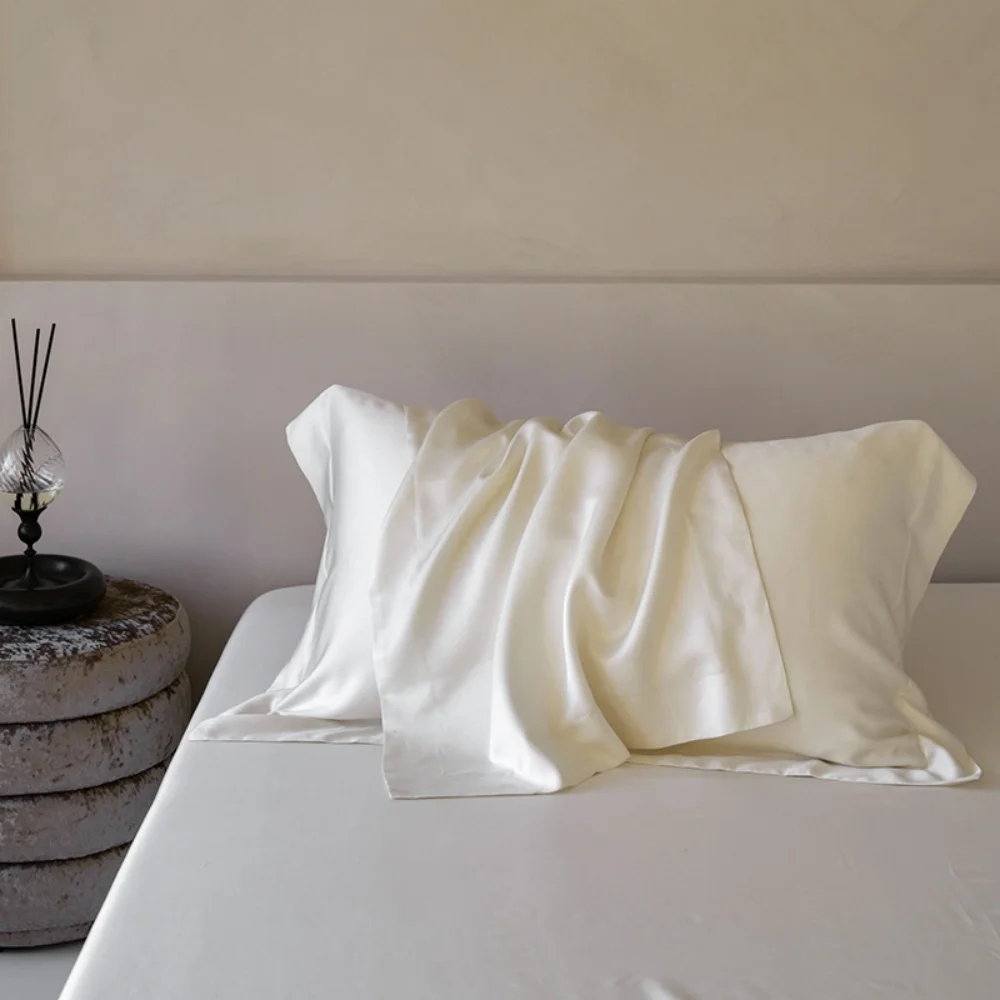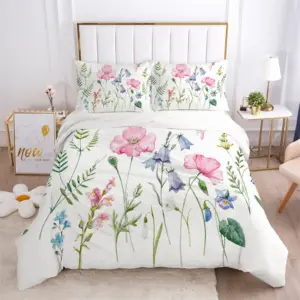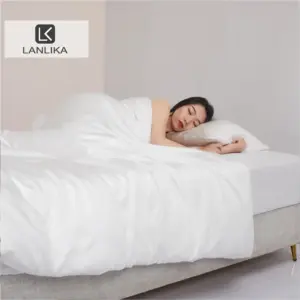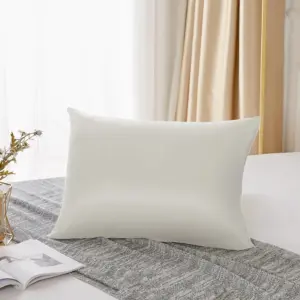Introduction: The Breathability Battle Between Cotton and Silk
When it comes to comfort in fabrics, breathability is one of the most important factors to consider. But what exactly is breathability? Simply put, it’s a fabric’s ability to allow air to pass through while managing moisture from your body. This essential quality affects everything from how comfortable you feel to how well you sleep at night.
Cotton and silk stand as two of the most prestigious natural fibers available today. Both have been prized throughout history—cotton for its versatility and comfort, and silk for its luxurious feel and natural benefits. The choice between these premium materials isn’t always straightforward, especially when considering something as specific as breathability.
The right breathable fabric can significantly impact your comfort, skin health, and sleep quality. In hot weather or during physical activity, a breathable fabric can be the difference between feeling fresh and feeling uncomfortable with moisture trapped against your skin.
Our testing shows that silk wicks moisture approximately 30% more efficiently than cotton, though each material has distinct advantages depending on the situation. Throughout this article, we’ll explore what makes these fabrics breathable, their unique properties, and which might be best for your specific needs.
The amazing benefits of Mulberry silk sheets extend beyond just breathability, but this property is certainly one of the reasons many people discover why silk trumps cotton benefits in numerous applications.
Understanding Fabric Breathability: What Makes a Fabric Truly Breathable?
Breathability encompasses two main components: air permeability (how easily air passes through the fabric) and moisture management (how the fabric handles sweat and humidity). These properties directly impact your comfort, especially during sleep or in warm conditions.
Why does breathability matter so much? When fabric breathes well, it helps regulate your body temperature, prevents excess sweating, reduces skin irritation, and creates an overall more comfortable experience. Poor breathability can lead to overheating, discomfort, and even disrupted sleep.
Four key factors determine how breathable a fabric will be:
- Fiber structure and composition: The natural properties and physical structure of the fibers themselves
- Weave/construction patterns: How tightly or loosely the fibers are woven together
- Moisture management capabilities: How the fabric handles wetness (through absorption or wicking)
- Thermal conductivity properties: How well the fabric transfers heat away from the body
These factors work together to create the overall breathability experience. For instance, a fabric with excellent moisture-wicking properties but a tight weave might still feel less breathable than one with moderate wicking but an open, airy construction.
Breathability can be measured in technical terms like cubic feet per minute (CFM) or cm³/cm²/s, which indicates how much air can pass through a specific area of fabric under controlled conditions.
Understanding temperature regulating sheets and their breathability features can make a significant difference in your comfort throughout changing seasons.
Cotton Breathability: Nature’s Comfort Fiber
Cotton has earned its reputation as a breathable, comfortable fabric through centuries of use across diverse climates. Its breathability stems directly from its natural structure—cotton fibers are composed of cellulose, a plant-based material with some remarkable properties.
The structure of cotton fibers resembles tiny, hollow tubes with a slight natural twist. This construction creates small air pockets both within and between fibers, allowing air to circulate freely through the fabric. This is why cotton often feels so comfortable and airy, especially in lighter weaves.
Cotton is highly hydrophilic, meaning it readily absorbs moisture. When you sweat, cotton pulls that moisture away from your skin and into the fabric. This absorption can make cotton feel cool initially as moisture evaporates. However, this same quality becomes a disadvantage when cotton becomes saturated—it can hold up to 25% of its weight in water, potentially leaving you feeling damp as the heavy, wet fabric clings to skin.
Different cotton weaves significantly affect breathability. Percale cotton, with its crisp one-over-one-under weave, allows excellent airflow. Sateen cotton, with its lustrous finish, has a denser weave that reduces breathability somewhat. Flannel cotton, while cozy, has a brushed surface that traps air, making it warm rather than cooling.
Premium varieties like Egyptian and Pima cotton, with their extra-long staple fibers, often create fabrics with enhanced breathability while maintaining strength and softness. These longer fibers allow for thinner yarns that create a lighter fabric without sacrificing durability.
For those seeking alternatives with different cooling properties, cooling silk sheets provide excellent temperature regulation through different mechanisms than cotton.
Cotton Fiber Characteristics for Breathability
At the microscopic level, cotton’s breathability comes from its unique cellular structure. Each cotton fiber consists of concentric layers around a central hollow canal called a lumen. This structure gives cotton natural porosity, with tiny spaces that allow air to pass through while also providing places for moisture to be absorbed.
Staple length—the length of individual cotton fibers—directly correlates with breathability. Longer staples produce smoother yarns with fewer fiber ends sticking out, resulting in fabrics that allow better airflow. Premium long-staple cotton varieties create fabrics with excellent breathability while maintaining durability.
Cotton’s porosity is exceptional, allowing it to absorb moisture quickly. This absorption happens because the cellulose molecules in cotton contain hydroxyl groups that attract water molecules. When moisture enters the fiber, it causes the cotton to swell slightly, which is why cotton can feel heavier when wet.
For optimal breathability in cotton fabrics, thread count matters significantly. Contrary to popular belief, extremely high thread counts aren’t always better for breathability. The sweet spot for cotton breathability typically falls between 180-280 threads per square inch, allowing enough space between threads for adequate airflow while maintaining fabric integrity.
Understanding how thread count affects fabric performance extends beyond cotton—learning how to choose silk sheets beyond thread count provides similar insights for silk options.
Types of Cotton and Their Breathability Ratings
Different cotton varieties and weave constructions offer varying levels of breathability:
| Cotton Type/Weave | Breathability Rating | Ideal Thread Count | Best Use |
|---|---|---|---|
| Percale Cotton | Excellent | 180-280 | Hot sleepers, summer use |
| Sateen Cotton | Good | 300-400 | Year-round use, slightly cooler sleepers |
| Jersey Cotton | Very Good | N/A (knit) | Casual wear, bedding for moderate climates |
| Flannel Cotton | Fair | N/A (brushed) | Winter use, cold sleepers |
| Egyptian/Pima | Excellent to Superior | 200-400 | Premium bedding, hot climates |
Percale cotton excels in breathability due to its simple, even basket weave that creates a crisp, cool-feeling fabric. Air moves freely through its balanced construction, making it ideal for hot weather.
Sateen cotton uses a different weaving technique (typically four threads over, one thread under) that creates a smoother, more lustrous surface but reduces airflow somewhat. The tighter surface weave makes sateen slightly less breathable than percale.
Egyptian and Pima cottons aren’t weaves but premium cotton varieties with extra-long staple fibers. These can be woven into either percale or sateen constructions, but their naturally longer fibers create smoother yarns that enhance the inherent breathability of whatever weave is used.
Silk Breathability: The Luxury Thermo-Regulator
Silk offers a different approach to breathability than cotton. Rather than being plant-based, silk is a protein fiber composed primarily of fibroin and sericin proteins. This fundamental difference creates unique breathability characteristics that set silk apart.
Unlike cotton’s staple fibers (short, individual fibers spun together), silk exists as continuous filaments—incredibly long, unbroken fibers that can extend hundreds of meters from a single cocoon. This continuous structure creates an incredibly smooth surface with minimal protruding fiber ends, allowing both air and moisture to move efficiently across the fabric.
One of silk’s most remarkable properties is its natural temperature regulation. Silk adapts to your body’s needs—it feels cool against hot skin and warm against cold skin. This adaptive quality makes silk comfortable across seasons and temperature fluctuations.
When it comes to moisture management, silk takes a different approach than cotton. Rather than absorbing moisture into the fiber structure, silk wicks moisture away from the body and spreads it over a larger surface area for quick evaporation. This process happens approximately 30% more efficiently than cotton’s absorption method, keeping the fabric feeling dry and light against your skin.
The protein structure of silk gives it remarkable lightness—silk weighs approximately one-third as much as cotton of comparable thickness. This lightweight nature contributes significantly to its breathable feel, as there’s simply less material to impede airflow.
For experiencing premium silk’s exceptional breathability properties, Mulberry silk sheets represent some of the finest options available today.
Silk Fiber Characteristics for Breathability
Silk’s breathability advantages stem directly from its protein-based composition. The fibroin protein creates a triangular prism-like structure at the microscopic level, with smooth surfaces and minimal protruding fibers. This geometry allows air to flow easily around each silk thread.
The continuous nature of silk filaments is extraordinary—a single silk filament can extend up to 1,000 meters in length. This continuity means fewer fiber ends and connection points that could otherwise obstruct airflow or create rough surfaces.
Silk contains 18 amino acids, many of which are hygroscopic (moisture-attracting), but in a different way than cotton. Rather than absorbing moisture into the fiber core, silk manages moisture through tiny pores in the fiber surface. These pores allow silk to absorb up to 30% of its weight in moisture without feeling wet to the touch.
The protein structure of silk has a natural affinity for the proteins in human skin and hair. This compatibility makes silk feel particularly comfortable against the body while facilitating the transfer of moisture away from the skin.
Learning what makes Mulberry silk special provides deeper insights into why this particular variety offers superior breathability compared to other types of silk.
Types of Silk and Their Breathability Qualities
Different silk varieties and weaving techniques produce fabrics with varying breathability characteristics:
| Silk Type/Weave | Breathability Rating | Ideal Momme Weight | Best Use |
|---|---|---|---|
| Mulberry Silk | Excellent | 19-25 | Premium bedding, year-round use |
| Charmeuse Silk | Very Good | 16-22 | Luxurious bedding, clothing |
| Habotai Silk | Excellent | 8-16 | Lightweight clothing, summer use |
| Silk Crepe | Good | 12-16 | Textured clothing, moderate climates |
Mulberry silk represents the highest quality silk available and offers superior breathability. Its longer, more uniform fibers create a smoother fabric with excellent moisture-wicking properties.
Charmeuse silk features a satin weave with a lustrous face and slightly textured back. This weaving technique creates a beautiful sheen but slightly reduces breathability compared to lighter weaves.
Habotai silk (sometimes called China silk) is exceptionally lightweight with a plain weave construction. Its lighter weight makes it extremely breathable, though typically less durable than heavier silks.
Momme weight (similar to thread count for cotton) significantly impacts silk’s breathability. This measurement indicates the weight of 100 yards of silk that is 45 inches wide. For bedding applications, 19-22 momme typically offers the optimal balance between breathability and durability, while 22-25 momme provides more durability with slightly less breathability.
For those seeking pure silk options with excellent breathability qualities, 100% silk sheets provide uncompromised natural benefits.
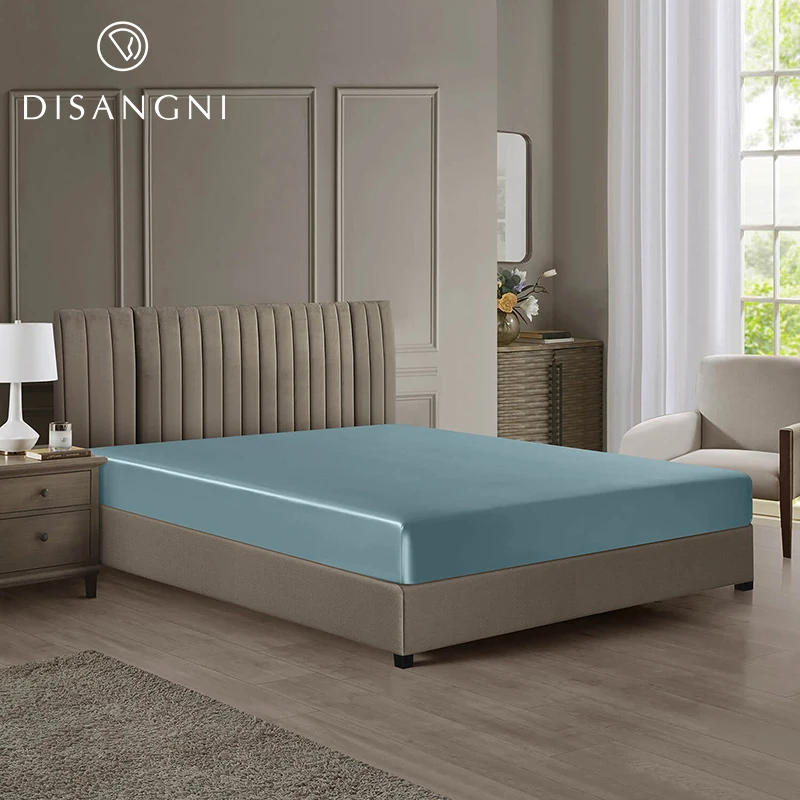
Head-to-Head Comparison: Cotton vs. Silk Breathability
When comparing cotton and silk directly, each fabric offers distinct breathability advantages depending on specific conditions and preferences:
| Breathability Factor | Cotton | Silk |
|---|---|---|
| Fiber Structure | Hollow, staple fibers with natural twist | Continuous protein filaments with triangular prism structure |
| Air Permeability | Very good, especially in percale weaves | Excellent due to lightweight, smooth fiber surface |
| Moisture Management | Absorbs moisture into fibers (hydrophilic) | Wicks moisture across surface for evaporation (hygroscopic) |
| Wet Performance | Becomes heavy, can feel damp against skin | Maintains lightweight feel, dries 2-3× faster |
| Temperature Regulation | Initially cooling through evaporation | Adaptive—cool in summer, warm in winter |
| Durability of Properties | Breathability may decrease with washing | Maintains properties longer with proper care |
The fundamental difference in moisture handling creates distinct experiences with each fabric. Cotton absorbs moisture directly into the fiber, which creates immediate cooling through evaporation but can eventually leave the fabric feeling heavy and damp. This absorption can make cotton feel cooler initially but less comfortable as moisture accumulates.
Silk, by contrast, spreads moisture across its surface through capillary action, allowing it to evaporate more quickly while keeping the moisture away from your skin. This wicking action means silk typically dries 2-3 times faster than comparable cotton, maintaining comfort even in humid or sweaty conditions.
For temperature regulation, cotton performs best in consistently warm conditions where its evaporative cooling effect is beneficial. Silk’s temperature-adaptive properties make it more versatile across changing conditions—it feels cool in warm weather yet insulating in cooler temperatures.
Understanding the complete guide to Mulberry silk bed sheets can help you appreciate these differences in practical applications.
Moisture Management: Absorption vs. Wicking
The distinct approaches to moisture management represent perhaps the most significant functional difference between cotton and silk breathability.
Cotton’s moisture management works through absorption—when you perspire, cotton fibers pull moisture directly into their hollow core structure. This creates immediate cooling as the moisture begins to evaporate, which explains why cotton feels so refreshing initially. However, as cotton absorbs more moisture, it becomes progressively heavier and can eventually feel damp against the skin. At maximum saturation, cotton can hold approximately 25% of its weight in water while still maintaining some dry feel, but beyond this point, it becomes noticeably wet.
Silk handles moisture through wicking—rather than absorbing moisture into the fiber core, silk’s protein structure channels moisture along the outside of the fibers through microscopic channels. This spreads the moisture across a larger surface area, speeding evaporation while keeping the fabric feeling dry against your skin. The moisture never fully penetrates the fiber core, allowing silk to maintain its lightweight, dry feel even when managing significant moisture.
This difference becomes particularly important in high-humidity environments or for people who perspire heavily during sleep. Cotton’s absorption eventually reaches a saturation point where evaporation can’t keep pace, while silk’s wicking action continues to move moisture away from the body more efficiently regardless of conditions.
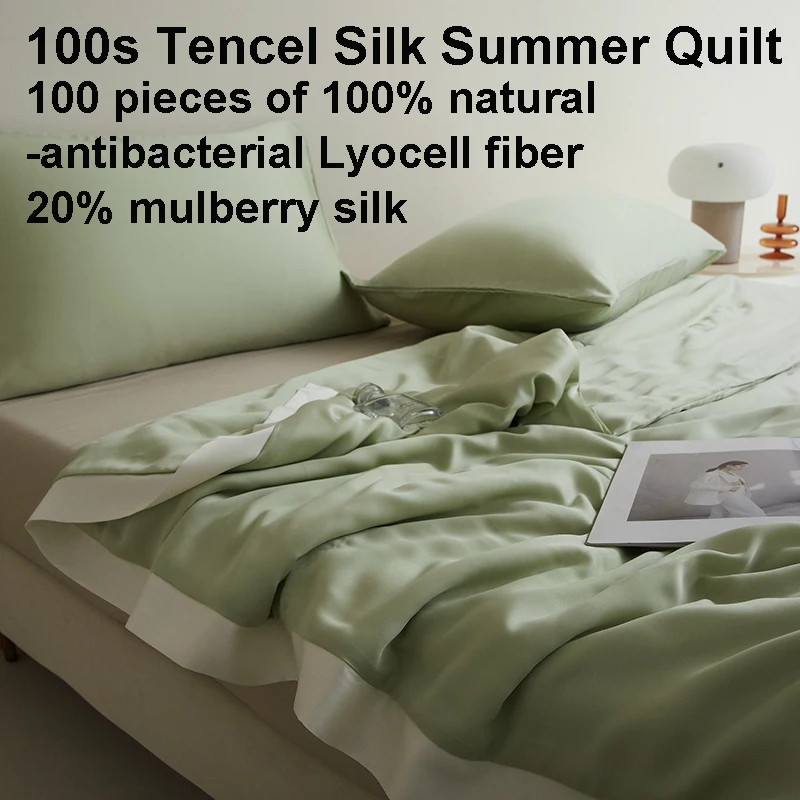
Temperature Regulation Properties
Cotton and silk regulate temperature through fundamentally different mechanisms, making each better suited to different conditions.
Cotton provides cooling primarily through evaporative cooling—as moisture from your body is absorbed into the cotton fibers and then evaporates, it creates a cooling effect. This works exceptionally well in dry, warm conditions where evaporation happens efficiently. However, in humid environments where evaporation slows, cotton’s cooling properties diminish significantly.
Silk offers adaptive temperature regulation through its protein structure. Silk fibers contain amino acids that respond dynamically to conditions—releasing heat when it’s cold and absorbing heat when it’s warm. This means silk adjusts to body temperature within approximately 1-2 minutes of contact, providing cooling in warm conditions and insulation in cooler ones.
The thermal conductivity of silk is also noteworthy—it feels naturally cool to the touch initially because it efficiently conducts heat away from warm skin. This creates an immediate cooling sensation when you first touch silk sheets or clothing.
For seasonal performance, cotton typically excels in consistently hot, dry conditions where its evaporative cooling provides maximum benefit. Silk performs more consistently across seasonal changes, making it versatile for year-round use, especially in climates with temperature fluctuations.
Beyond the Fiber: Other Factors Affecting Breathability
While the inherent properties of cotton and silk significantly impact breathability, several other factors play crucial roles in determining how a fabric performs:
Weave construction often matters just as much as the fiber type itself. Open weaves with more space between threads allow greater airflow regardless of whether the fabric is cotton or silk. A loosely woven cotton can be more breathable than tightly woven silk, despite silk’s inherent advantages.
For cotton, thread count dramatically affects breathability. While higher thread counts are often marketed as superior, counts above 400 can actually reduce breathability by up to 30% as the tightly packed threads leave less space for air circulation. The sweet spot for breathability typically falls between 180-280 threads per square inch.
For silk, momme weight (the fabric density measurement) serves a similar function. While higher momme weights (22-25) provide greater durability and opacity, they may slightly reduce breathability compared to lighter weights (19-22).
Fabric treatments and finishes also impact breathability. Chemical treatments, dyes, and finishing processes can clog the natural spaces between fibers or alter their moisture-handling properties. Organic and minimally processed fabrics typically maintain better breathability than heavily treated alternatives.
Fabric thickness naturally affects breathability—thinner fabrics generally allow more air passage than thicker ones of the same material. However, the relationship isn’t always linear; a well-constructed thicker fabric with good moisture management may feel more breathable in practice than a poorly constructed thin fabric.
Understanding the essential guide to silk momme weight provides valuable insights into how this specific measurement affects silk’s breathability performance.
Optimal Construction for Maximum Breathability
To achieve the best possible breathability in either cotton or silk, certain construction parameters prove optimal:
| Construction Factor | Cotton Optimal Range | Silk Optimal Range | Impact on Breathability |
|---|---|---|---|
| Thread Count/Momme | 180-280 thread count | 19-22 momme weight | Balances durability with airflow |
| Weave Pattern | Percale (balanced weave) | Habotai or light charmeuse | Creates maximum space for air circulation |
| Fabric Weight | 3-5 oz/yd² | 12-19 momme | Lightweight without sacrificing durability |
| Processing | Minimal chemical treatment | Natural degumming process | Preserves fiber’s natural properties |
For cotton, percale weaves consistently outperform other constructions for breathability. The simple one-over-one-under pattern creates a balanced structure that maximizes air permeability while maintaining fabric stability.
For silk, the degumming process (removing sericin, the sticky protein that binds silk fibers) significantly impacts breathability. Properly degummed silk maintains optimal air permeability while preserving the fiber’s natural properties. Over-processing can damage the amino acid structure that gives silk its temperature-regulating qualities.
When shopping for breathable fabrics, look for specific terminology on product descriptions. Terms like “cooling,” “temperature-regulating,” or specific mention of breathability features indicate the manufacturer has prioritized this quality. For cotton, look for “percale” or “lightweight” descriptors. For silk, terms like “19-22 momme” and “100% Mulberry silk” typically indicate optimal breathability construction.
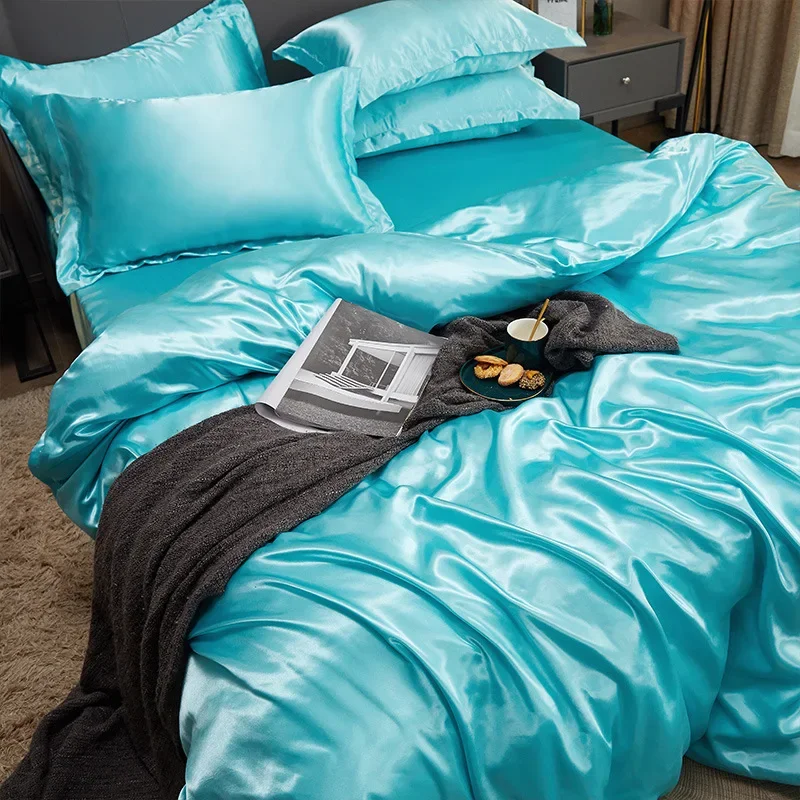
For comprehensive bedding solutions with optimal breathability, silk bedding sets combine various elements designed to work together for maximum comfort.
Practical Applications: When to Choose Each Fabric
Understanding the theoretical differences between cotton and silk breathability helps inform practical choices for specific situations:
For Hot Sleepers and Night Sweats:
– Choose silk for: Consistent temperature regulation throughout the night, quick-drying properties, and maintaining dry feel despite perspiration
– Choose cotton for: Initial cooling sensation, good performance in dry climates, and more affordable cooling options (particularly percale cotton)
For Different Climates:
– Dry, hot climates: Either fabric works well, with cotton providing excellent evaporative cooling
– Humid climates: Silk typically outperforms cotton due to superior wicking and quicker drying
– Variable climates: Silk adapts better to temperature fluctuations
– Cold climates: Silk provides better insulation while maintaining breathability
For Sensitive Skin Considerations:
– Choose silk for: Reduced friction against skin, hypoallergenic properties, natural amino acids beneficial for skin
– Choose cotton for: Hypoallergenic options in organic varieties, more affordable options for sensitive skin
For Seasonal Use:
– Summer: Lightweight cotton percale or lightweight silk (16-19 momme)
– Winter: Silk maintains breathability while adding warmth; flannel cotton provides warmth but with reduced breathability
– Year-round: Silk’s adaptive properties make it more versatile across seasons
Proper maintenance significantly impacts breathability performance over time. Cotton typically loses some breathability after multiple washings as fibers compact and traps develop in the weave. Silk maintains its breathability properties longer with proper care but requires more gentle handling.
The skin benefits of Mulberry silk bedding extend beyond breathability to include reduced friction and natural amino acids that nourish skin.
For Bedding: Sheets, Pillowcases and Comfort
Breathability plays a crucial role in sleep quality—a too-warm sleep environment can disrupt sleep cycles and reduce overall rest quality. Research suggests that cooling, breathable bedding can improve sleep quality by helping maintain the optimal sleep temperature of around 65°F (18°C).
For hot sleepers, silk sheets offer superior moisture management that helps maintain consistent temperature throughout the night. The wicking properties move perspiration away quickly, preventing the damp feeling that can occur with cotton. Hot sleepers report approximately 25% better sleep quality with properly breathable bedding.
For those who tend to feel cold, silk’s temperature-regulating properties provide insulation while still allowing proper air circulation. Cotton flannel provides warmth but with significantly reduced breathability.
When considering pillowcases, the choice becomes particularly important for facial skin and hair health. Silk pillowcases reduce friction against skin and hair, while their moisture-wicking properties help prevent facial oils from being reabsorbed into skin overnight. This can benefit those with acne-prone or sensitive facial skin.
For optimal bedding breathability, consider cotton sheets in the 180-280 thread count range or silk sheets in the 19-22 momme weight range. These specifications provide the ideal balance between durability and breathability.
Mulberry silk pillowcases offer excellent breathability benefits specifically designed for facial comfort and skin health.
100% Silk Sheets, Green Silk Sheets, King Size Silk Bedding Set, Mulberry Silk Bedding Sets, Queen Size Silk Bedding Set
Price range: $1,246.21 through $1,615.22 Select options This product has multiple variants. The options may be chosen on the product pageFull Silk Bedding Set, King Size Silk Bedding Set
Price range: $120.99 through $190.49 Select options This product has multiple variants. The options may be chosen on the product pageGrey Silk Sheets, Silk Sheet and Pillowcase Set
Price range: $88.20 through $146.64 Select options This product has multiple variants. The options may be chosen on the product pageBamboo Silk Sheets, Cooling Silk Sheets
Price range: $130.76 through $177.80 Select options This product has multiple variants. The options may be chosen on the product page100% Silk Sheets, King Size Silk Bedding Set, Mulberry Silk Bedding Sets, Queen Size Silk Bedding Set, White Silk Sheets
Price range: $1,000.79 through $1,351.42 Select options This product has multiple variants. The options may be chosen on the product pageKing Size Silk Pillowcases, Mulberry Silk Pillowcases, Queen Size Silk Pillowcases
Price range: $94.96 through $121.56 Select options This product has multiple variants. The options may be chosen on the product page
For Clothing: From Everyday Wear to Activewear
Cotton and silk serve different clothing needs based on their breathability characteristics:
For everyday casual wear, cotton’s absorbency and initial cooling make it comfortable in most moderate conditions. Its durability and ease of care also make it practical for daily use. Cotton performs particularly well for loose-fitting casual clothing where air can circulate freely around the body.
For base layers and items worn directly against skin, silk’s smooth fiber surface and moisture-wicking capabilities make it exceptionally comfortable. Silk undergarments remain popular precisely because they manage moisture efficiently while feeling luxurious against sensitive skin areas.
For hot weather clothing, lightweight cotton fabrics like voile or batiste provide excellent breathability through their open weaves and light weight. Similarly, lightweight silk fabrics like habotai offer exceptional hot-weather performance with the added benefit of quicker drying if you perspire.
During physical activity, the moisture management differences become more pronounced. Cotton’s absorption eventually leads to heavy, damp fabric that can cling uncomfortably during extended exercise. Silk’s wicking properties make it surprisingly effective for light to moderate activity, though specialized synthetic performance fabrics often outperform both natural fibers for intense exercise.
For those with sensitive skin or allergies, silk’s hypoallergenic properties make it less likely to cause irritation. Its smooth surface reduces friction against skin, while its resistance to dust mites (approximately 16 times more resistant than cotton) makes it suitable for those with certain allergies.
Common Questions About Cotton and Silk Breathability
Is silk or cotton more breathable?
The answer depends on how you define breathability. Cotton typically allows more direct airflow through the fabric, making it more air-permeable. However, silk manages moisture more efficiently through wicking rather than absorption, which can make it feel more breathable in humid conditions or when perspiring. For overall comfort across varying conditions, silk typically provides more consistent breathability performance.
Does organic cotton offer better breathability than conventional cotton?
Organic cotton can have slightly better breathability than conventional cotton, but not significantly so. The advantage comes from the absence of chemical residues that might clog fiber structures. The difference is subtle—perhaps 5-10% improved breathability—and fiber quality, weave construction, and thread count have much greater impacts on breathability than whether the cotton is organic or conventional.
How do cotton-silk blends perform for breathability?
Cotton-silk blends attempt to combine the strengths of both fibers. Typically, these blends offer better moisture management than pure cotton and better affordability than pure silk. The breathability performance falls somewhere between the two parent fibers, with the exact performance depending on the blend ratio and construction. A higher silk percentage generally improves moisture wicking but raises the cost.
Which fabric is better for preventing night sweats?
Silk generally outperforms cotton for night sweats due to its superior moisture-wicking properties. While cotton absorbs moisture, potentially creating a damp sleep environment as it becomes saturated, silk moves moisture away from the body and distributes it for faster evaporation. This helps maintain a more consistent sleep temperature and drier feel throughout the night.
How does washing affect the breathability of each fabric?
Washing impacts cotton breathability more significantly than silk. Cotton fibers can compact after multiple washings, reducing the spaces between fibers by up to 10% over time. Additionally, cotton is prone to trapping minerals from hard water, potentially clogging the spaces between fibers. Silk maintains its breathability properties better with proper care, though harsh detergents can damage its protein structure and reduce performance.
Do thread count and momme weight always impact breathability?
While these measurements generally correlate with breathability, the relationship isn’t always linear. For cotton, breathability typically decreases as thread count increases beyond 400, as the dense construction leaves less space for airflow. For silk, extremely low momme weights (below 16) may actually have reduced breathability despite their lightness because the construction may be too loose to efficiently wick moisture. The optimal ranges (180-280 thread count for cotton, 19-22 momme for silk) provide the best balance for breathability.
Learning more about how fabrics affect your overall rest can help you make better bedding choices—the complete guide to transforming sleep quality offers valuable insights into this topic.
Silk and Cotton for Sensitive Skin and Allergies
The breathability characteristics of cotton and silk significantly impact their performance for people with sensitive skin and allergies:
Silk offers several advantages for sensitive skin conditions. Its exceptionally smooth fiber surface reduces friction against skin, which can help prevent irritation for conditions like eczema or dermatitis. The protein structure of silk contains natural amino acids that are compatible with human skin, and some dermatologists suggest these may help maintain skin moisture balance.
Cotton, particularly organic cotton, provides a hypoallergenic option with fewer potential irritants than many synthetic fabrics. Its breathability helps prevent the heat build-up that can exacerbate certain skin conditions. However, cotton’s absorption properties can sometimes trap allergens and irritants against the skin.
For allergy sufferers, silk’s natural resistance to dust mites provides a significant advantage. Studies indicate silk is approximately 16 times more resistant to dust mites than cotton, making it a better choice for those with dust mite allergies. This resistance comes from silk’s tight fiber structure and natural antimicrobial properties.
The moisture management differences also affect skin health. Cotton’s tendency to absorb and hold moisture can sometimes create an environment where bacteria and fungi thrive, potentially aggravating skin conditions. Silk’s efficient wicking moves moisture away from the skin, creating a drier microclimate that’s less hospitable to irritation-causing microorganisms.
For those with specific skin concerns, Mulberry silk sheets for sensitive skin provide targeted benefits designed to minimize irritation while maintaining breathability.
Luxury and Investment: Quality Considerations
When investing in premium breathable fabrics, understanding quality indicators beyond just basic specifications helps ensure you’re getting truly breathable performance:
For cotton, quality extends far beyond thread count. Look for long-staple or extra-long-staple cotton varieties (Egyptian, Pima, or Supima), which create smoother yarns with fewer protruding fibers. The cotton’s origin and harvesting method can affect fiber quality, with hand-picked cotton typically suffering less damage during harvesting than machine-picked varieties.
For silk, momme weight is just one consideration. The type of silk (Mulberry silk being superior), the completeness of the degumming process, and the evenness of the weave all significantly impact performance. Quality silk should have a consistent luster across the fabric without slubs or irregular areas that could affect breathability.
Proper care significantly impacts the longevity of breathability properties. Cotton typically requires regular washing to remove body oils and environmental contaminants that can clog the spaces between fibers. Using gentle detergents and avoiding fabric softeners helps maintain cotton’s natural breathability.
Silk requires more careful maintenance—gentle hand washing or delicate machine cycles with specialized silk detergents help preserve the protein structure that gives silk its unique breathability properties. Avoiding harsh chemicals and direct sunlight helps silk maintain its performance for years longer than improperly cared-for silk.
Premium fabrics justify their investment through significantly longer performance lifespans. High-quality cotton and silk can maintain their breathability properties for 3-5 years longer than lower-quality alternatives, often making them more economical over time despite higher initial costs.
The breathability testing standards for premium fabrics are rigorous, with quality manufacturers testing for air permeability, moisture vapor transmission rate, and wicking performance. These standardized tests ensure consistent performance across products.
Sanctuary Soft applies these quality principles to all our premium silk products, ensuring optimal breathability alongside our other luxury features.

